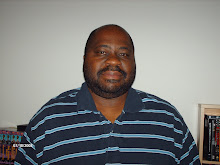Here's the script for this week's Sports@Large, which, as always, can be heard live each Monday at 5:30 Eastern on WYPR-FM in Baltimore, or through the station's website.
A few months ago, Barack Obama gave a campaign speech at a rally to nearly 20,000 students at the University of Maryland’s Comcast Center. On that winter day, Obama paid tribute to the history made by the school’s former national championship women’s basketball team.
Meanwhile, most of the attendees at the rally likely had little sense of the real history made by Obama in becoming the first black man to win the presidential nomination of a major American political party.
But 42 years before, long before any of those students were even born, history of another sort was made across campus in another basketball arena, Cole Field House. There, in the 1966 NCAA men’s basketball championship game, a team of five African American starters was fielded and won the title against a team of all white players, as Texas Western beat mighty Kentucky.
The architect of that piece of sports sociology, Texas Western coach Don Haskins, died Sunday at the age of 78. Haskins’ accomplishment was noted in a book and subsequent film, Glory Road, but even so, his deed, and that of his players, hasn’t been feted in the way perhaps its should.
Before that championship run, segregation, even in gyms and athletic fields on campuses of institutions of higher learning, was still sanctioned. For years, schools, mostly in the South, declined to recruit black athletes. Alabama football coach Paul Bear Bryant and Kentucky men’s basketball coach Adolph Rupp each kept their teams devoid of African Americans, and Rupp did so proudly.
Even after Haskins guided the Miners past the team known as Rupp’s runts, the barriers of discrimination stayed in place at many schools. The Atlantic Coast Conference, where Maryland plays, would not have black men playing basketball in the league for a few years after that, and the conference would not even get an African-American coach until the mid 1980’s, when Baltimore’s Bob Wade coached Maryland.
For his part, Haskins claimed at the time of the 1966 game and for decades afterwards, that he was not trying to make history with his lineup, but, rather, was starting the five players that he believed gave him the best chance to win. In a perfect world, you’d want the best players to receive the opportunities to play and to win, but that’s not always the case.
In all, Haskins would spend 38 seasons at the school, which subsequently would be renamed Texas-El Paso. He would go on to win seven Western Athletic Conference championships, while taking 14 teams to the NCAA tournament and seven clubs to the National Invitational Tournament. Haskins’ career record was 719-353, and he would eventually be enshrined at the Naismith Basketball Hall of Fame in Springfield, Mass.
There are two groups of people who make history. There are those, like Barack Obama, who set out to do so with bold strokes and sweeping deeds. And then there are those, like Don Haskins, who influence the annals of time quietly and effectively, simply by doing the right thing at the right time and in the right place.
Subscribe to:
Post Comments (Atom)

No comments:
Post a Comment